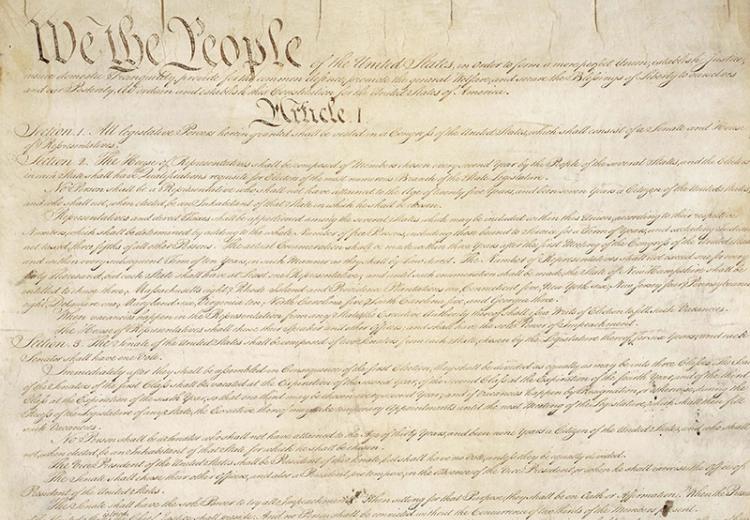The Preamble to the Constitution: A Close Reading Lesson

The first page of the United States Constitution, opening with the Preamble.
"[T]he preamble of a statute is a key to open the mind of the makers, as to the mischiefs, which are to be remedied, and the objects, which are to be accomplished by the provisions of the statute."
— Justice Joseph Story, Commentaries on the Constitution
The Preamble is the introduction to the United States Constitution, and it serves two central purposes. First, it states the source from which the Constitution derives its authority: the sovereign people of the United States. Second, it sets forth the ends that the Constitution and the government that it establishes are meant to serve.
Gouverneur Morris, the man the Constitutional Convention entrusted with drafting the final version of the document, put into memorable language the principles of government negotiated and formulated at the Convention.
As Supreme Court Justice Joseph Story points out in the passage quoted above, the Preamble captures some of the hopes and fears of the framers for the American republic. By reading their words closely and comparing them with those of the Articles of Confederation, students can in turn access “the mind of the makers” as to “mischiefs” to be “remedied” and “objects” to be accomplished.
In this lesson, students will practice close reading of the Preamble and of related historic documents, illuminating the ideas that the framers of the Constitution set forth about the foundation and the aims of government.
Guiding Questions
How does the language of the Preamble to the U.S. Constitution reflect historical circumstances and ideas about government?
To what extent is the U.S. Constitution a finished document?
Learning Objectives
Compare the Preamble to the U.S. Constitution with the statement of purposes included in the Articles of Confederation.
Explain the source of authority and the goals of the U.S. Constitution as identified in the Preamble.
Evaluate the fundamental values and principles expressed in the Preamble to the U.S. Constitution.
